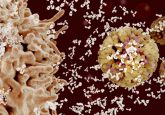New imaging agent could improve detection and monitoring of cancer

Researchers from Georgia State University (GA, USA) have developed a novel imaging agent to better trace changes and evaluate treatment efficacy in cancer. The findings of the study were published this week in Scientific Reports by Nature.
The team developed a novel imaging agent known as ProCA1.GRPR, which demonstrated strong tumor penetration. The agent targets the gastrin-releasing peptide receptor on the surface of diseased cells, including prostate, lung and cervical cancer.
Molecular imaging of cancer biomarkers using MRI leads to better understanding of cancers and drug activity during preclinical and clinical trials. However, a significant limitation in utilizing MRI is the low sensitivity and lack of imaging agents capable of differentiating normal and diseased tissue.
“ProCA1.GRPR has a strong clinical translation for human application and represents a major step forward in the quantitative imaging of disease biomarkers without the use of radiation,” commented lead author Jenny Yang of Georgia State University. “This information is valuable for staging disease progression and monitoring treatment effects.”
The new imaging technique is a key advancement for molecular imaging with the ability to quantitatively detect expression level and spatial distribution of disease biomarkers without utilizing radiation.
“Our discovery is of great interest to both chemists and clinicians for disease diagnosis, including noninvasive early detection of human diseases, cancer biology, molecular basis of human diseases and translational research with preclinical and clinical applications,” commented Shenghui Xue, co-author of the paper also of Georgia State University.
It is hoped that improved imaging agents will lead to increased understanding of disease development and treatment.




